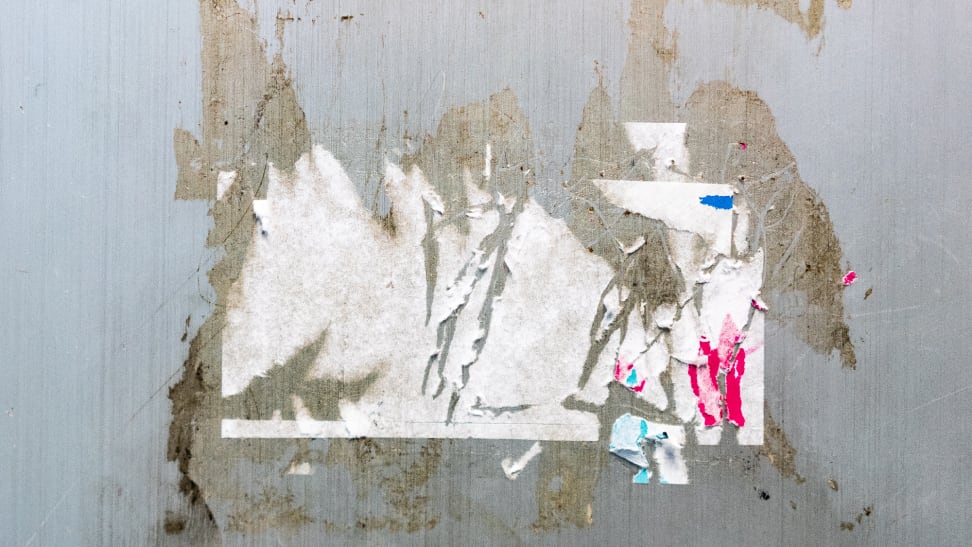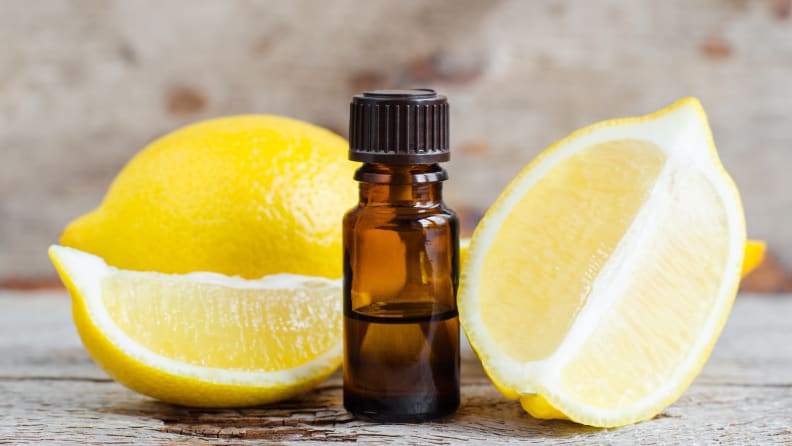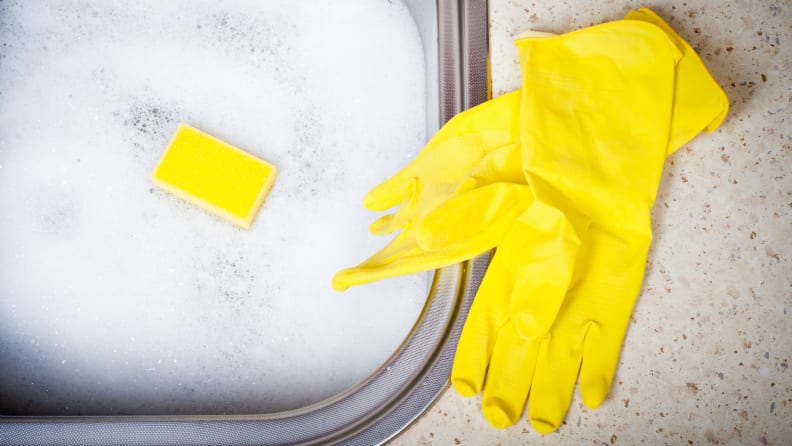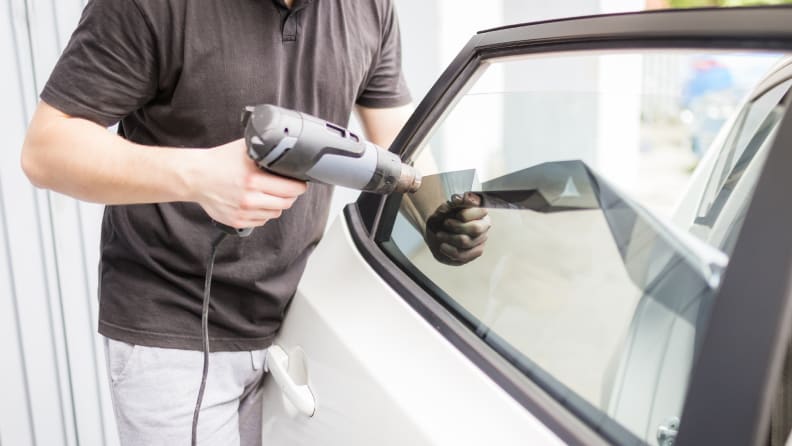 — Recommendations are independently chosen by Reviewed’s editors. Purchases you make through our links may earn us a commission.
— Recommendations are independently chosen by Reviewed’s editors. Purchases you make through our links may earn us a commission.Stickers wind up on all sorts of surfaces, from plastic to glass to wood to cars. But, what happens when your semi-permanent sticker has outlived its usefulness—or your kids decided to spackle their dresser with a sheet of Peppa Pig decals—and you want to get back to a spotless surface?
Everyone has at least one sticker-based horror story where attempting removal has taken hours or completely ruined the stickered surface. If that’s you, don’t worry, there are a lot of methods available out there and some work better for certain kinds of stickers than others.
Here we’ll go over the best way we’ve found, as well as a few alternatives.
The best way to solve the problem: Solvents

Lemon oil is one of the best ways to separate a sticker from its surface.
Solvents are almost always going to be the best way to remove a sticker. It attacks the adhesive directly, and can get between the adhesive and the stickered surface, creating a very clean and easy removal process.
You might need to soak the sticker several times, and if it’s really robust you might need to scrub it off anyway, but even so we’ve found this method results in the cleanest surfaces without running the risk of scratches.
Here is a list of the more common types of solvents you can use. We recommend starting with items higher up on the list and then working your way down to the stronger stuff if they don’t work.
- Lemon oil or another vegetable-based oil
- Petroleum jelly
- Vinegar
- Glass cleaners
- Rubbing alcohol
- Nail polish remover (acetone)
- Goo Gone
- WD-40
Many of these options aren’t safe for human consumption, so make sure you’re cleaning any surfaces you use them on thoroughly after the sticker’s gone.
It’s most helpful to completely saturate the sticker with the solvent. You can apply the solvent to the sticker directly, but it’s often easier to apply it to a rag or paper towel first, then leave that resting on the stickered surface. Remember to allow 10 to 15 minutes for the solvent to permeate the surface before starting the scraping: You can save a lot of elbow grease by giving the chemicals time to do their thing.
How to approach different stickered surfaces, from wood to plastic to your car
Stickers can wind up on just about every surface, from glass to plastic to metal to wood. Fortunately, the surface you’re trying to get the sticker off of largely doesn’t matter. Whether figuring out how to get stickers off of plastic or how to get stickers off of your car, the strategy of soaking the sticker in solvent is good for just about everything.
This being said, you want to make sure the solvent isn’t going to dissolve the surface itself. You should proceed with caution when using rubbing alcohol, nail polish remover, or anything stronger, as they can dissolve certain materials or ruin finished surfaces. This is why we recommend starting with oil or vinegar and then working your way down the list to the more powerful options.
Remember to test every new solvent on a small area that’s hard to see first, just in case it does ruin the finish.
Other methods—for when solvents aren’t the best solution
Warm, soapy water or steam will work for some (not all) stickers

Warm, soapy water will work great on common stickers, though it won’t rid you of a robust sticker, like one meant for your car.
Depending on what kind of sticker you’re dealing with, this simple solution might also be the best one. For this method to work, simply get some warm, soapy water onto a face cloth and let it sit on top of the sticker for 10 or 15 minutes. At that point, the sticker will either lift up and off the surface almost as if by magic, or you’ll find that basically nothing has happened.
Likewise, you can boil some water and then hold the stickered surface over the steam to see if it permeates through and lifts off the sticker.
Many of the more robust stickers—especially those designed for use outdoors, or on cars—are going to shrug off soapy water. They’re specifically designed to withstand exposure to the elements, so this method simply won’t work. Likewise, you should be careful when using this method to get stickers off of plastic: If the steam or water is too hot, it can cause the plastic to warp or outright melt.
Heat and scrape—a lot of work with often dubious results

You can use a hair dryer or heat gun to both affix and remove certain adhesives—but, it can turn others into a sticky mess.
If solvents aren’t going to work for you, one alternative is to heat up the sticker, then use a thin scraping tool to get between the sticker and the surface while the adhesive is melted.
This method is not our favorite for several reasons. For starters, heating-based solutions are one where the surface does matter. While most metal, glass, or wooden surfaces will be fine under a little heat, most plastics will start to warp or outright melt, i.e. don’t use this method when considering how to get stickers off plastic.
Likewise, this method might not work well for certain wooden surfaces, as the scraping action could damage a finished surface (but if it’s unfinished you could always just sand the entire sticker off).
Additionally, most adhesives aren’t going to cleanly release from their surfaces when heat is applied. Many adhesives will just melt, resulting in a gooey film left behind. In many cases you’d be better off without the heat and just scraping the adhesive off the surface with a carefully-angled razor blade. This is an effort better spent than Googling “how to get stickers off glass.”
If heat doesn’t work, try ice—especially to get stickers off a metal surface
Ice is another great way at breaking an adhesive, as it can cause it to freeze up and become more rigid, breaking it away from the stickered surface.
This interaction is likely well-known to anyone who’s ever had to park underneath sappy trees: Any sap splotches that you don’t clean off before the winter freeze will seem to magically disappear during the season.
Unfortunately, while it’s a low effort way to get rid of sap on cars, it might not be the best solution for many types of stickers. While it’s easy to shove, say, a notebook into your freezer, you can’t exactly park your car in your freezer bumper first. Also, you’ll need a lot of ice to make sure you’re properly freezing the adhesive, and ice has a tendency to melt when the weather’s warm.
When ice does work, it’s a better option than heat, we’ve found, but overall we’re still not sold on this method.
Sign up for our newsletter.
Enter your email:
The product experts at Reviewed have all your shopping needs covered. Follow Reviewed on Facebook, Twitter, Instagram, TikTok, or Flipboard for the latest deals, product reviews, and more.
Related content
Prices were accurate at the time this article was published but may change over time.


